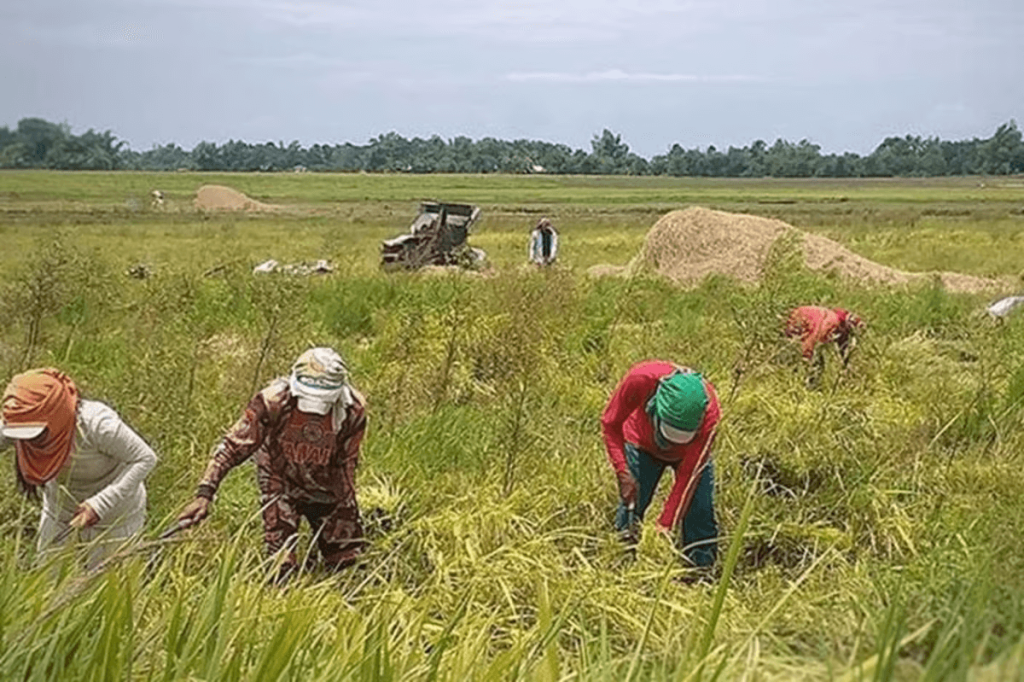Tags
PhilRice warns farmers of rainy season pest surge

THE Philippine Rice Research Institute (PhilRice) has issued a warning to rice farmers to closely monitor their fields for major pests, particularly as the wet season exacerbates pest attacks.
This caution comes from findings by the Pest Risk Identification and Management (Prime) Project, a key initiative under the Department of Agriculture aimed at safeguarding crops and preventing significant yield losses.
Leonardo V. Marquez, a PhilRice crop protection expert, emphasized the critical importance of vigilant pest monitoring, especially during the rainy season when conditions are favorable for pest proliferation.
“Unmanaged infestations can lead to yield losses of 15 percent or more. Early detection and management are needed,” Marquez said.
The Prime Project, based on a comprehensive survey conducted over the past five years across 53 provinces, has identified the top five pests threatening rice crops: brown spot, deadheart, leaf blast, sheath blight, and whitehead. This analysis involved 19 monitored pests with data indicating that pest incidents are more frequent and severe during the wet season.
Brown spot, a fungal disease affecting rice at all growth stages, was particularly prevalent in Western Visayas last December with incidences exceeding five percent in Antique, Aklan, Capiz, Iloilo, and Negros Occidental.
This disease can cause stunting, yellowing, leaf drying, short panicles, and empty grains. Marquez advised using high-quality seeds, applying potassium-rich fertilizers, and fungicides to mitigate its impact.
Deadheart, linked to stem borer infestations, was reported with high incidence rates in Iloilo.
“Deadheart, where the central part of the panicle turns white and dies, can cause substantial yield loss if 30 percent of the crop is affected during flowering,” Marquez said.
He stressed the importance of monitoring stem borer moths, especially during the wet season, to determine when to take action.
Leaf blast, another major concern, becomes more damaging during the rainy season. Effective management practices include avoiding excessive nitrate nitrogen, maintaining proper water depth, and burning affected rice straw to eliminate spores.
Sheath blight, characterized by grayish-brown lesions, poses a significant threat, particularly in irrigated fields with heavy rainfall and excessive nitrogen fertilization. The disease can reduce yields by up to 25 percent if left untreated and has been a concern in Antique, Capiz, Iloilo, and Negros Occidental.
Whiteheads, resulting from stem borer attacks, disrupt nutrient flow and lead to panicle death.
Marquez recommended avoiding pesticide use for 30-40 days after planting, promoting beneficial insects, and monitoring butterfly populations.
“Pesticides should only be used if caterpillar numbers exceed those of wasps. For future plantings, use resilient varieties, stagger planting, and manage fertilization properly,” he advised.
The Prime Project, under the Rice Program of the Department of Agriculture-Bureau of Agricultural Research, focuses on pest management by assessing outbreak risk factors, developing mitigation strategies, and enhancing partners’ capabilities in remote sensing and pest risk mapping. DA-PhilRice
https://www.sunstar.com.ph/davao/philrice-warns-farmers-of-rainy-season-pest-surgePublished Date: August 11, 2024






